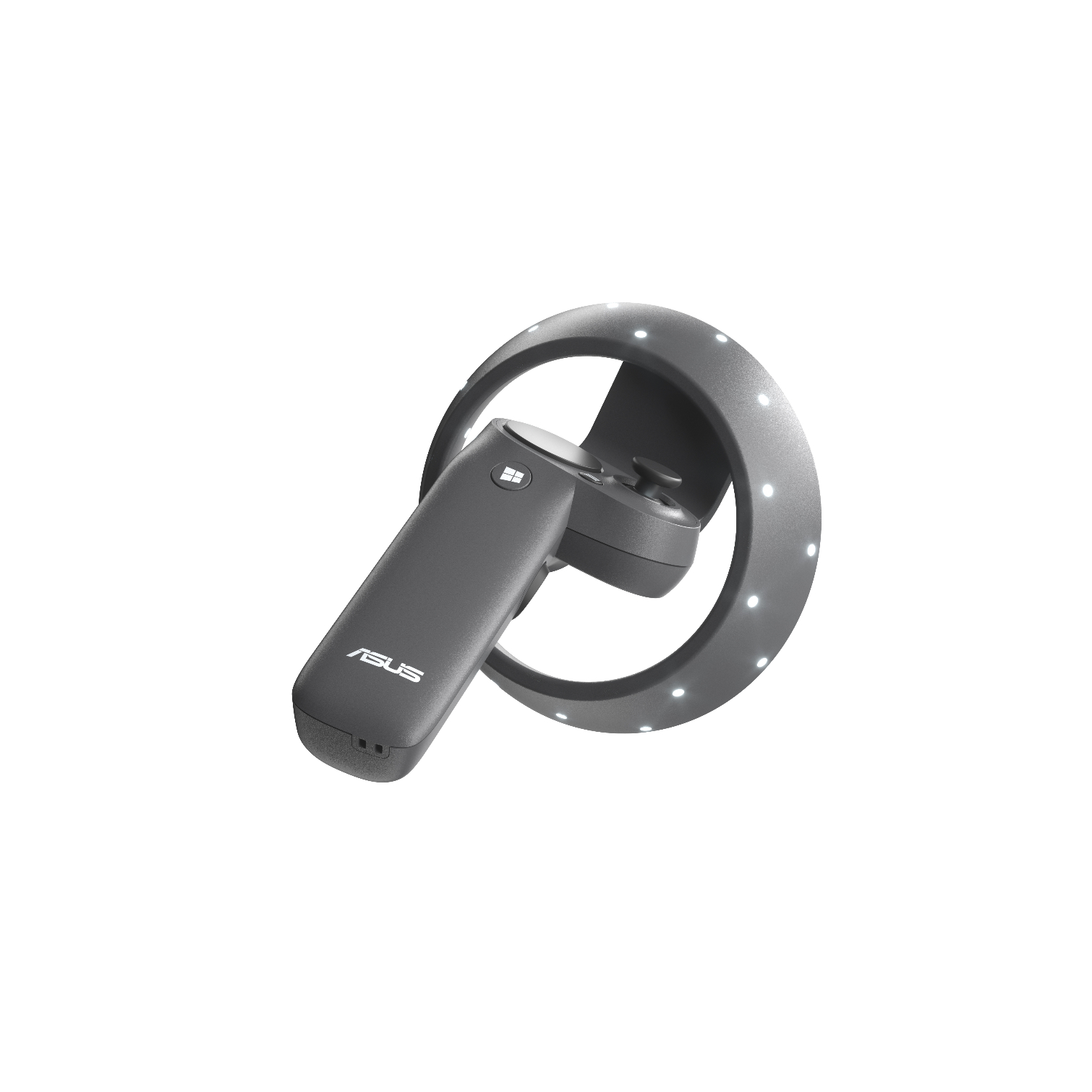Asus Announces HC102 Windows Mixed Reality Headset




Asus revealed its take on the Windows Mixed Reality (WMR) VR platform with the HC102 headset. The self-contained VR package is designed for easy setup with a focus on ergonomics and comfort.
The headset itself offers an around-the-head headband design that we’ve seen on other WMR headsets, such as those from Acer and HP. This design attempts to avoid discomfort that can be caused by headsets with over-the-head designs, such as the HTC Vive and Oculus Rift. The halo-like headband distributes the weight of the headset around the head such that the display unit can rest on your face instead of clamping to it. Like we’ve seen on the Acer WMR headset, the display unit on the HC102 is mounted on a hinge that allows it to be flipped upwards like a visor.
The headset’s other ergonomic considerations include the use of antimicrobial materials in cushions and an overall weight below 400g. A single cable terminated with a combination of USB 3.0 type A and HDMI lead out from the headset. The optical system of the Asus HC102 is very similar to the Acer’s. It consists of two 2.89”, 90Hz 1440 x 1440 screens that are set 13mm from your eyes. The lens configuration sets the display focal distance at 1.3m and gives a per-eye FOV of 95°.
The HC102 comes with two controllers that also have a similar design to those of the Acer WMR. Each controller has a ring structure with 32 LEDs embedded within it that enable 6DoF tracking from the headset’s cameras. Asus didn’t elaborate on the controllers’ button configuration, but from the pictures, we spot at least one thumbstick, one trigger, and what is probably a trackpad.



Compared to its very similar cousin from Acer, Asus’ headset is lighter and arguably better looking. They both use the same displays and seem equal controller-wise, except that the Asus controllers have more LEDs, which might enable higher accuracy in tracking. Compared to headsets from HTC, Oculus, and Razer, however, both the Asus and Acer are lightweights.
The Asus HC102 WMR headset is available now at an MSRP of $429, which is significantly more than the $278 that the Acer can be had for.
Microsoft officially introduced its horse in the VR game, the WMR initiative, with the Windows 10 Fall Creators Update in October 2017. Unlike certain competing VR platforms, such as HTC Vive, WMR is designed around “inside-out” tracking solutions that don’t use offboard equipment. This means that the tracking systems are contained within the headset and controllers, and that the user doesn’t need to have any stand-mounted equipment, which naturally also limit the VR space.
Get Tom's Hardware's best news and in-depth reviews, straight to your inbox.
For more, check out our overview of currently available VR headsets and our predictions for VR in 2018.
| Header Cell - Column 0 | Asus HC102 WMR Headset |
|---|---|
| Display Type | LCD |
| Display Size | 2.89 x 2” |
| PPI | 706 |
| Per-Eye Resolution | 1440 x 1440 |
| Refresh Rate | 90Hz |
| FOV (HxV) | 105° x unknown |
| Lens Type | Aspherical Fresnel |
| Lens Adjustment | unknown |
| Sensors | Gyroscope, Accelerometer, Magnetometer, Proximity Sensor |
| Tracking Technology | 6 DoF Inside-out BW camera-based spatial tracking (stereo BW cameras) |
| Integrated Camera | Cameras for tracking only, no video pass-through. |
| Audio | Combo audio jack |
| Wireless | N/A |
| HMD Ports | 1 cable (HDMI and USB 3.0 type A) |
| HMD Cable Length | 4m |
| Dimensions | Unknown |
| Weight | Below 400g |